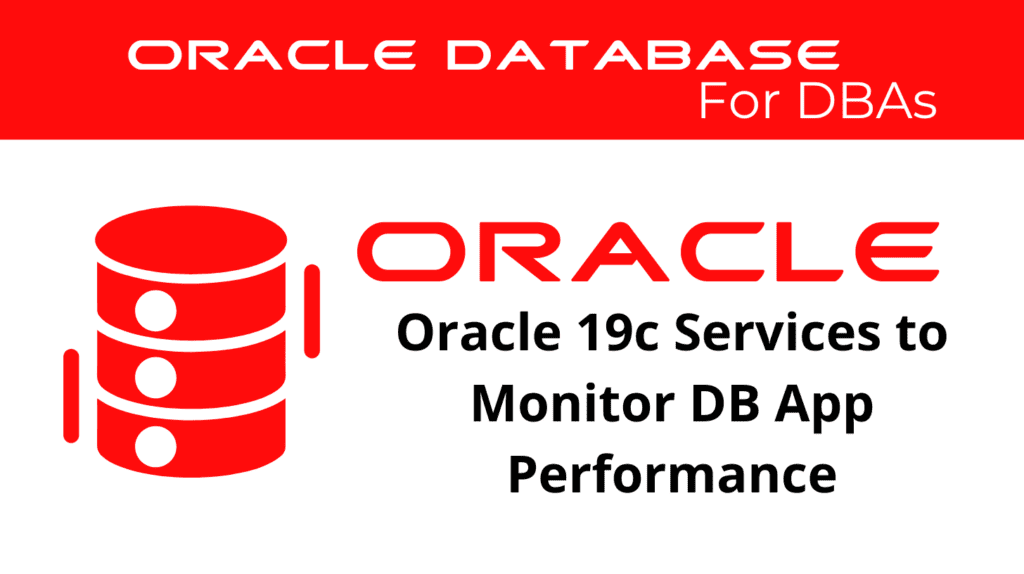
Oracle 19c offers robust tools for configuring and using services to monitor database application performance. Effective service configuration and performance monitoring are essential for ensuring that applications run smoothly and efficiently. This article will guide you through the process of configuring services, including those managed by srvctl, and monitoring performance in Oracle 19c.
Understanding Service Configuration
Service configuration in Oracle 19c involves setting up and managing database services to optimize application performance. Proper configuration helps in workload management, improves resource utilization, and ensures high availability.
Key Features of Service Configuration
Workload Management: Distributes workloads efficiently across available resources.
High Availability: Ensures continuous availability of database services.
Resource Optimization: Maximizes resource utilization by allocating resources based on service requirements.
Scalability: Allows easy scaling of database services as demand grows.
Service Isolation: Provides isolation for different applications to prevent resource contention.
Step-by-Step Guide to Service Configuration
Step1: Create a Database Service Using SQL
EXEC DBMS_SERVICE.CREATE_SERVICE(
service_name => 'myservice',
network_name => 'myservice.example.com'
);
Step2: Start the Service
EXEC DBMS_SERVICE.START_SERVICE('myservice');
Step3: Assign Service to a Resource Group
EXEC DBMS_RESOURCE_MANAGER.CREATE_PLAN(
plan => 'myplan'
);
EXEC DBMS_RESOURCE_MANAGER.CREATE_CONSUMER_GROUP(
consumer_group => 'mygroup'
);
EXEC DBMS_RESOURCE_MANAGER.CREATE_PLAN_DIRECTIVE(
plan => 'myplan',
group_or_subplan => 'mygroup',
comment => 'Directive for mygroup'
);
EXEC DBMS_RESOURCE_MANAGER.SWITCH_CONSUMER_GROUP_FOR_SERVICE(
service_name => 'myservice',
consumer_group => 'mygroup'
);
Step4: Configure Service Attributes
ALTER SYSTEM SET service_names='myservice';
Step-by-Step Guide to Service Configuration Using srvctl
Step1: Create and Start a Service Using srvctl
srvctl add service -db mydb -service myservice -preferred myinstance1 -available myinstance2
srvctl start service -db mydb -service myservice
Step2: Check Service Status
srvctl status service -db mydb -service myservice
Monitoring Performance
Performance monitoring in Oracle 19c is crucial for maintaining database health and ensuring applications perform optimally. It involves tracking various performance metrics and identifying potential issues before they impact the system.
Key Components of Performance Monitoring
Real-Time Monitoring: Provides immediate insights into database performance.
Historical Analysis: Allows analysis of performance trends over time.
Alerting: Sends notifications for performance anomalies.
Detailed Metrics: Tracks comprehensive performance metrics such as CPU usage, memory utilization, and I/O operations.
User Activity Monitoring: Monitors database user activities to detect unusual patterns.
Service Configuration – Step-by-Step Guide to Performance Monitoring
Step1: Enable Performance Monitoring
ALTER SYSTEM SET control_management_pack_access='DIAGNOSTIC+TUNING' SCOPE=BOTH;
Step2: Set Up Automatic Workload Repository (AWR)
BEGIN
DBMS_WORKLOAD_REPOSITORY.CREATE_SNAPSHOT;
END;
Step3: Configure Alerts and Notifications
BEGIN
DBMS_SERVER_ALERT.SET_THRESHOLD(
metrics_id => DBMS_SERVER_ALERT.CPU_TIME_PER_CALL,
warning_operator => DBMS_SERVER_ALERT.OPERATOR_GE,
warning_value => '300',
critical_operator => DBMS_SERVER_ALERT.OPERATOR_GE,
critical_value => '500',
observation_period => 1,
consecutive_occurrences => 1
);
END;
Step4: Monitor Performance Metrics
SELECT * FROM v$sysmetric WHERE metric_name='Database CPU Time Ratio';
Step5: Analyze Historical Performance Data
SELECT * FROM dba_hist_sysmetric_summary WHERE metric_name='DB Time';
📢 You might also like: Oracle 19c Phases for SQL Statement Processing (Category: Performance Management and Tuning)
Benefits of Service Setup and Performance Tracking
Implementing effective service setup and performance tracking in Oracle 19c provides numerous benefits:
Enhanced Application Performance: Optimizes application performance by ensuring efficient resource utilization.
Proactive Issue Resolution: Identifies and resolves potential performance issues before they affect users.
Improved Resource Management: Ensures optimal use of database resources, reducing operational costs.
High Availability: Maintains continuous availability of critical database services.
Best Practices
To maximize the benefits of service configuration and performance monitoring, consider the following best practices:
Regular Monitoring: Continuously monitor database performance to ensure seamless operations.
Define Clear Thresholds: Set clear performance thresholds to get timely alerts for potential issues.
Automate Monitoring: Use automation tools to minimize manual monitoring efforts.
Analyze Trends: Regularly analyze performance trends to identify and address long-term issues.
Ensure Security: Implement strong security measures to protect monitoring data and ensure it is accessible only to authorized personnel.
Conclusion
Oracle 19c’s service configuration and performance monitoring features offer powerful solutions for managing database application performance. By leveraging these capabilities, organizations can ensure their applications run efficiently, maintain high availability, and proactively address performance issues.
Following best practices and effectively managing services and performance metrics will help database administrators maintain optimal Oracle 19c environments, meeting the demands of today’s data-driven landscape.
See more on Oracle’s website!
Be Oracle Performance Management and Tuning Certified Professional, this world is full of opportunities for qualified DBAs!





